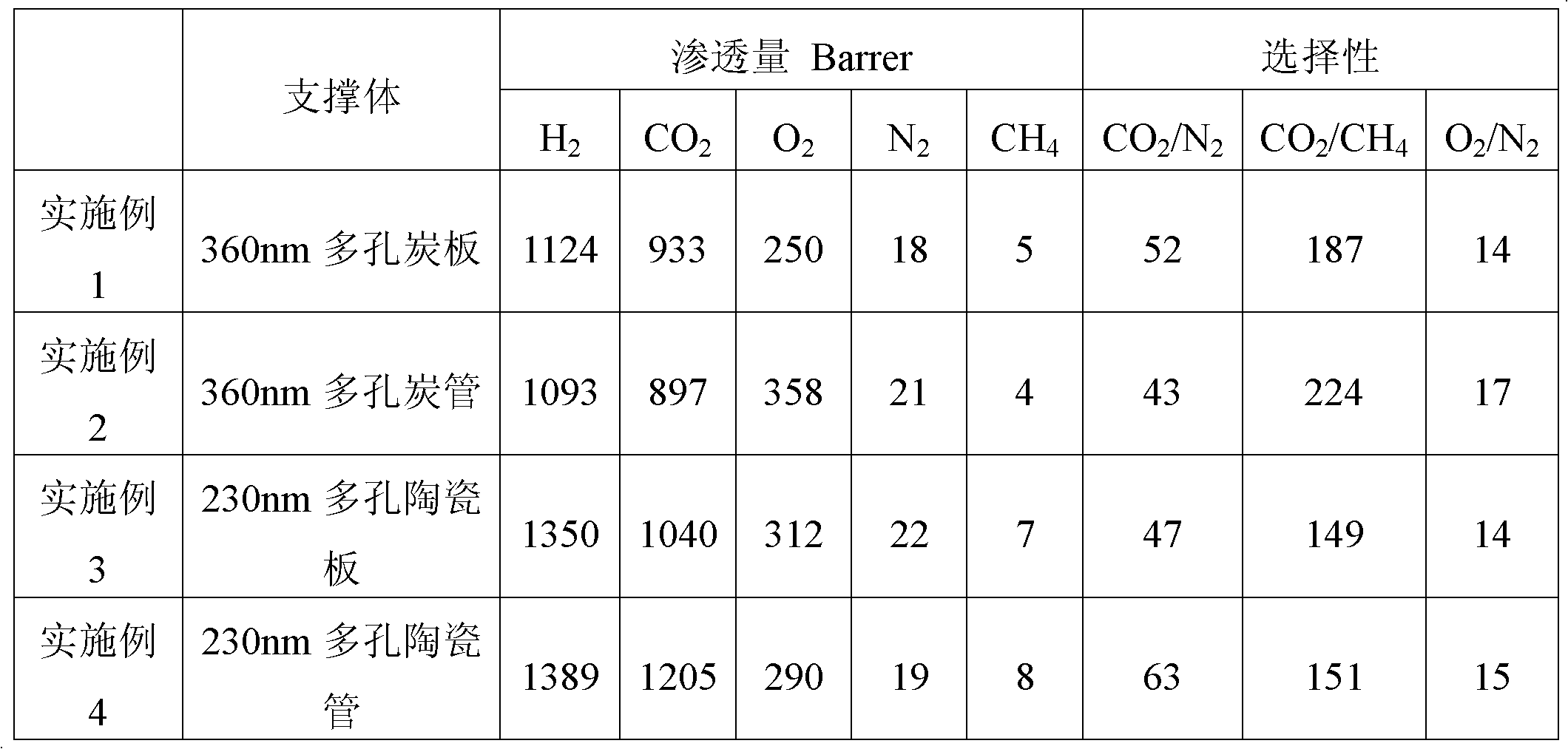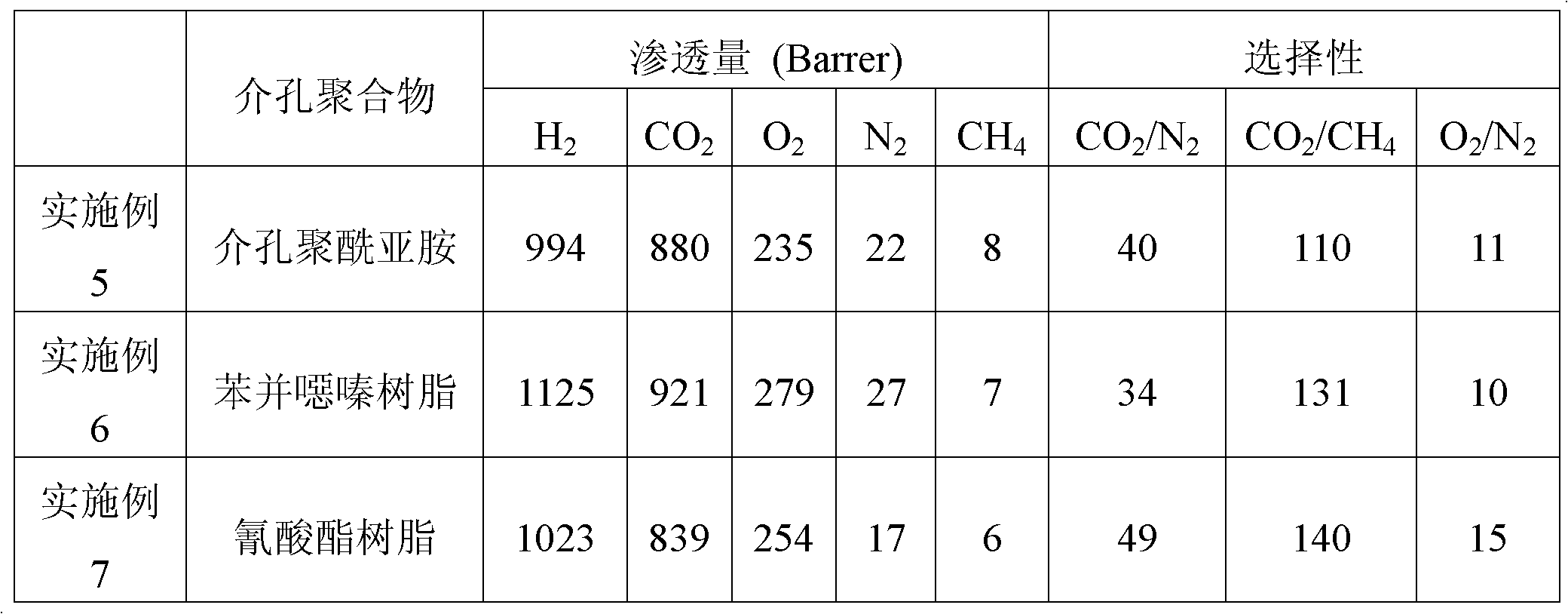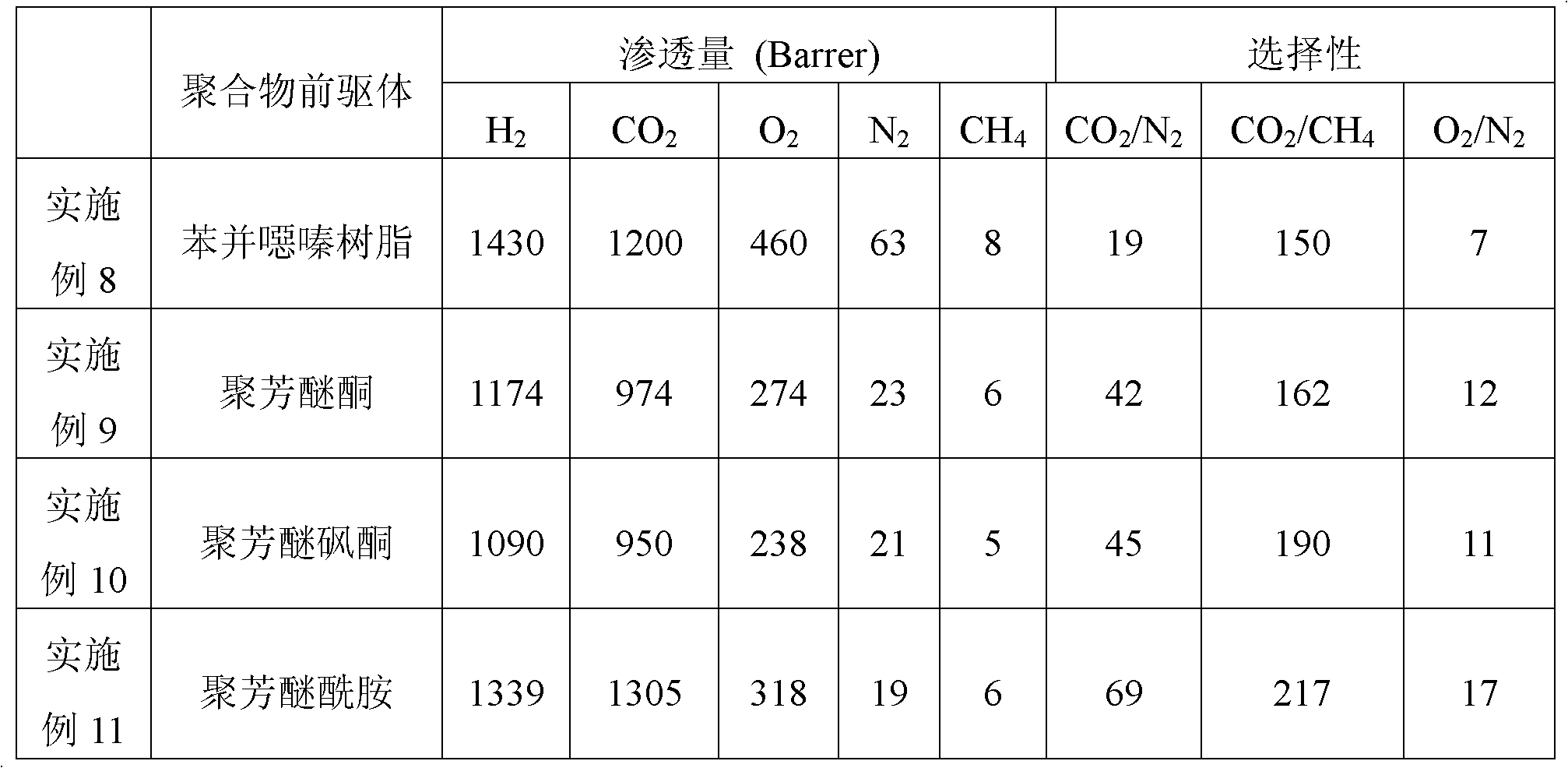Composite carbon diaphragm with mesoporous and microporous gradient structure and preparation method for diaphragm
A pore structure, composite carbon technology, applied in chemical instruments and methods, membrane technology, semi-permeable membrane separation, etc., to achieve the effect of simple and easy preparation process, improved permeability, and high separation selectivity
- Summary
- Abstract
- Description
- Claims
- Application Information
AI Technical Summary
Problems solved by technology
Method used
Image
Examples
Embodiment 1
[0028] Dissolving 10g of mesoporous phenolic resin in DMAc is configured into a film-making solution with a mass percentage concentration of 58%, and is coated on the surface of a porous carbon plate or a carbon tube support body with a pore size of 360nm by spin coating. Dry at a temperature of 80°C for 30 hours to make a composite polymer film; put it into a carbonization furnace, and under the protection of nitrogen with a flow rate of 200ml / min, heat it to 750°C at a heating rate of 1°C / min for high-temperature carbonization. After 1h, it was naturally cooled to normal temperature to obtain a composite interlayer carbon film with a mesoporous structure; The imide membrane-making solution was sprayed on their surfaces to form a separation layer, and dried at a temperature of 30°C for 20 hours, and then at a temperature of 80°C for 25 hours to form a mesoporous composite polymer membrane. Then put it into a carbonization furnace, under the protection of nitrogen with a flow ...
Embodiment 2~4
[0030] The procedure of Example 1 was repeated on the supports specified in Table 1 below, where the test results are listed.
[0031] Table 1
[0032]
Embodiment 5
[0034]The 10g mesoporous polymer specified in Table 1 is configured in DMAc as a film-making solution with a mass percentage concentration of 20%, and is coated on the surface of a porous carbon plate support with a pore size of 230nm by scraping. Dry at ℃ for 28 hours to make a composite polymer film; put them into a carbonization furnace respectively, under the protection of nitrogen with a flow rate of 200ml / min, heat to 800℃ at a heating rate of 2℃ / min for high-temperature carbonization, and the constant temperature time is 2h After that, it was naturally cooled to room temperature to obtain a composite interlayer carbon membrane with a mesoporous structure. Then adopt the method of spin coating to spray the microporous cyanate resin film-making liquid with a mass percentage concentration of 13% and the solvent of N-methylpyrrolidone on the surface to form a separation layer, and first dry it at a temperature of 40 ° C. 15h, and then dried at 80°C for 20h to make a mesopor...
PUM
| Property | Measurement | Unit |
|---|---|---|
| pore size | aaaaa | aaaaa |
| flexural strength | aaaaa | aaaaa |
| pore size | aaaaa | aaaaa |
Abstract
Description
Claims
Application Information
 Login to View More
Login to View More - R&D
- Intellectual Property
- Life Sciences
- Materials
- Tech Scout
- Unparalleled Data Quality
- Higher Quality Content
- 60% Fewer Hallucinations
Browse by: Latest US Patents, China's latest patents, Technical Efficacy Thesaurus, Application Domain, Technology Topic, Popular Technical Reports.
© 2025 PatSnap. All rights reserved.Legal|Privacy policy|Modern Slavery Act Transparency Statement|Sitemap|About US| Contact US: help@patsnap.com



